
Nature Reviews Earth & Environment
metrics 2024
Uncovering Solutions for a Resilient Planet
Introduction
Nature Reviews Earth & Environment, published by SpringerNature, serves as an essential platform for researchers and professionals in the fields of environmental science, atmospheric science, and earth-surface processes. Since its inception in 2020, this distinguished journal has quickly established itself as a leading resource, achieving Q1 quartile rankings in multiple categories including Atmospheric Science and Pollution, reflecting its commitment to high-quality, impactful research. With an impressive Scopus ranking as #1 in its respective categories and a 99th percentile standing, the journal is pivotal for those seeking to explore cutting-edge advancements and critical insights in the interplay between our planet's environment and humanity. The publication encourages open discourse through its accessible content, aiming to inspire and inform its audience about pressing environmental challenges and innovative solutions. As it continues to converge through to 2024, Nature Reviews Earth & Environment stands out as a vital resource for anyone dedicated to understanding and preserving our planet.
Metrics 2024
 -
- 49.70
49.70 54.50
54.50 -
-Metrics History
Rank 2024
IF (Web Of Science)
JCI (Web Of Science)
Quartile History
Similar Journals

Earth System Dynamics
Advancing the Science of Our Planet's Interconnected SystemsEarth System Dynamics is a premier academic journal dedicated to advancing our understanding of the intricate interactions within the Earth system, encompassing atmospheric, hydrological, geological, and biological processes. Published by COPERNICUS GESELLSCHAFT MBH in Germany, this Open Access journal has been fostering scholarly communication since its inception in 2010, allowing unrestricted access to vital research findings. With an impressive Impact Factor and a ranking of #7 out of 195 in the field of Earth and Planetary Sciences, as well as being categorized in the Q1 quartile, Earth System Dynamics stands at the forefront of its discipline. Researchers, professionals, and students alike benefit from its comprehensive scope, which covers various aspects of Earth system science and its implications for climate change and sustainability, making it an indispensable resource for anyone invested in the environmental challenges of our time. As the journal continues to converge remarkable insights up to 2024, contributors and readers alike are encouraged to engage with this vital ongoing conversation.

ISPRS International Journal of Geo-Information
Innovating geoinformation technologies for global impact.ISPRS International Journal of Geo-Information, published by MDPI, stands at the forefront of the field of geospatial sciences, contributing valuable knowledge and research insights since its inception in 2012. This open access journal, which boasts an impressive collection of articles that emphasize the integration of geographic information systems (GIS) in Earth and planetary sciences, currently achieves a remarkable standing, with a 2023 impact factor ranking in the Q1 category for both Earth and Planetary Sciences and Geography, Planning and Development. Researchers and professionals engaged in the study of spatial data, remote sensing, and innovative geoinformation technologies will find the journal an essential resource, offering diverse perspectives and methodologies. With its open access model, the journal aims to promote the dissemination of knowledge globally, fostering collaboration among scholars while pushing the boundaries of research in geoinformation disciplines. The journal is based in Switzerland and is well-positioned to contribute significantly to the understanding and application of geospatial data for societal advancements.

South African Journal of Geomatics
Unlocking the Potential of Geomatics for AllSouth African Journal of Geomatics is a pivotal platform dedicated to the advancement of geomatics, focusing on the dynamic intersection of geographic information science, surveying, and mapping technologies. Published by CONSAS CONFERENCE, the journal serves as a crucial resource for researchers, professionals, and students in the geomatics field, providing insightful, peer-reviewed articles that explore contemporary challenges and innovations. Operating under an open-access model, the journal ensures the wide dissemination of knowledge, promoting collaboration and scholarly exchange among the global geomatics community. With a commitment to enhancing the visibility of significant research and fostering academic discourse, the South African Journal of Geomatics plays a vital role in contributing to the development of this essential discipline in South Africa and beyond.
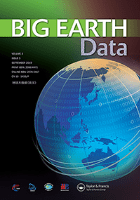
Big Earth Data
Fostering Interdisciplinary Collaboration for Global Environmental SolutionsBig Earth Data is a prestigious open-access journal that has been at the forefront of advancing research in the intersection of earth science and computer technology since its inception in 2017. Published by TAYLOR & FRANCIS LTD in the United Kingdom, this journal is dedicated to disseminating groundbreaking findings and innovative methodologies in the fields of Earth and Planetary Sciences and Computer Science Applications. With a commendable impact factor and an impressive positioning in the Scopus rankings—claiming Q1 status in Computers in Earth Sciences and Q2 in Computer Science Applications—it serves as a vital resource for researchers, professionals, and students alike. The journal encourages submissions that explore the integration of big data technologies in managing, analyzing, and visualizing earth-related data, thereby fostering interdisciplinary collaboration. Since embracing its open-access model, Big Earth Data has enhanced the accessibility of high-quality research, promoting a broader dialogue in the scientific community and contributing to informed decision-making in global environmental challenges.

ATMOSPHERIC CHEMISTRY AND PHYSICS
Advancing understanding of our atmosphere's complexities.Atmospheric Chemistry and Physics is a leading open-access journal published by Copernicus Gesellschaft mbH, dedicated to advancing the understanding of atmospheric processes and their interactions. With an ISSN of 1680-7316 and E-ISSN of 1680-7324, this journal has been a pivotal resource in the field since its inception in 1999. Based in Göttingen, Germany, it covers a broad spectrum of atmospheric science, providing a platform for original research and reviews that help drive innovation and inform policy. Notably recognized as Q1 in the Atmospheric Science category for 2023, it ranks #8 out of 148 in its field according to Scopus, reflecting its high-quality and impactful contributions. With a commitment to open access since 2001, the journal aims to facilitate widespread dissemination of knowledge, making it readily available to researchers, professionals, and students globally. By fostering the exchange of ideas and findings, Atmospheric Chemistry and Physics plays a crucial role in addressing the pressing challenges related to climate change, air quality, and atmospheric processes.
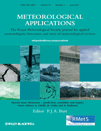
METEOROLOGICAL APPLICATIONS
Advancing the Frontiers of Atmospheric ScienceMETEOROLOGICAL APPLICATIONS is an esteemed journal published by WILEY that has been a vital resource in the field of atmospheric science since its inception in 1994. With an Impact Factor indicative of its credibility and influence in the academic community, the journal has notably achieved a Q2 ranking in the 2023 category quartiles for Atmospheric Science, demonstrating its commitment to advancing knowledge in meteorology. As an Open Access journal since 2020, it provides widespread accessibility to researchers, professionals, and students, promoting collaborative efforts in the pursuit of innovative solutions to atmospheric challenges. With its dedicated focus on interdisciplinary studies in meteorology, METEOROLOGICAL APPLICATIONS serves as a crucial platform for sharing cutting-edge research and fostering dialogue among experts, thereby enhancing our understanding of weather phenomena and their global impacts. For submissions and accessing articles, the journal can be found at WILEY’s headquarters in Hoboken, NJ, representing a hub for scholarly discourse in the atmospheric sciences.

Frontiers of Earth Science
Pioneering Research for a Sustainable FutureFrontiers of Earth Science is a prominent academic journal in the field of Earth and Planetary Sciences, published by Springer. With an ISSN of 2095-0195 and an E-ISSN of 2095-0209, this journal serves as a significant platform for researchers and professionals to disseminate their findings from 2007 to 2024. It is recognized for its impactful contributions within the category of Earth and Planetary Sciences, boasting a respected Q2 ranking in 2023. With a Scopus ranking of 64 out of 195, placing it in the 67th percentile, Frontiers of Earth Science continues to drive academic dialogue and innovation. The journal is dedicated to exploring a diverse range of topics, including geology, meteorology, and environmental science, and amplifying the understanding of Earth systems through rigorous research. Located in New York, USA, this journal embraces an Open Access model, ensuring that groundbreaking research is readily available to the global scientific community, thereby enhancing its accessibility and impact.
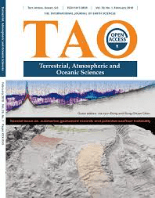
TERRESTRIAL ATMOSPHERIC AND OCEANIC SCIENCES
Unveiling Connections Between Land, Air, and SeaTERRESTRIAL ATMOSPHERIC AND OCEANIC SCIENCES, published by SpringerNature, is a distinguished peer-reviewed journal that has been an essential platform for innovative research in the fields of atmospheric science, oceanography, and Earth and planetary sciences since its inception. With an Open Access policy established in 1990, the journal ensures wide dissemination of knowledge, allowing researchers, professionals, and students to access cutting-edge findings without restrictions. Based in Switzerland and featuring a comprehensive coverage from 1996 to 2024, the journal currently holds a Q3 ranking across various categories, indicating its growing significance in the scientific community. Although it is positioned within the 39th percentile in Earth and Planetary Sciences, its commitment to fostering high-quality research makes it a valuable resource for advancing understanding of terrestrial environments and their interconnections. Researchers seeking a platform for their work in atmospheric and oceanic sciences will find TERRESTRIAL ATMOSPHERIC AND OCEANIC SCIENCES to be an ideal venue for sharing their insights with a global audience.
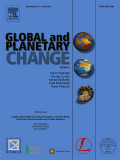
GLOBAL AND PLANETARY CHANGE
Unraveling the Complexities of Planetary ChangeGLOBAL AND PLANETARY CHANGE, published by Elsevier, is a premier international journal focused on the critical issues surrounding environmental science, climate change, and planetary dynamics. Since its inception in 1989, this journal has established itself as a leading voice in the field, currently holding a prestigious Q1 ranking in both Global and Planetary Change and Oceanography as of 2023. With a remarkable influence reflected in its Scopus rankings—15th in Earth and Planetary Sciences and 34th in Global and Planetary Change—it serves as an essential platform for researchers, professionals, and students. The journal provides a comprehensive examination of cutting-edge research findings and innovative developments that address the urgent challenges facing our planet. Although it is not an Open Access journal, it remains a vital resource for anyone keen to contribute to or stay informed on the ever-evolving discourse of global environmental change, promoting sustainable solutions for the future.
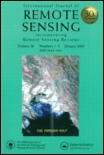
INTERNATIONAL JOURNAL OF REMOTE SENSING
Exploring the Frontiers of Earth ObservationInternational Journal of Remote Sensing, published by Taylor & Francis Ltd, stands at the forefront of Earth and Planetary Sciences, providing a critical platform for disseminating pioneering research since its inception in 1980. With an impressive ranking of #25 out of 195 in general Earth and Planetary Sciences and a notable 87th percentile on Scopus, this journal is recognized for its high-quality contributions that span diverse topics including satellite imagery analysis, geospatial technologies, and environmental monitoring. As a Q1 journal in its field for 2023, it offers invaluable insights and methodologies that are essential for researchers, professionals, and students alike. Although not Open Access, the journal facilitates a comprehensive understanding of remote sensing sciences, ensuring that the scholarly community remains updated with the latest advancements, trends, and applications that impact global challenges.